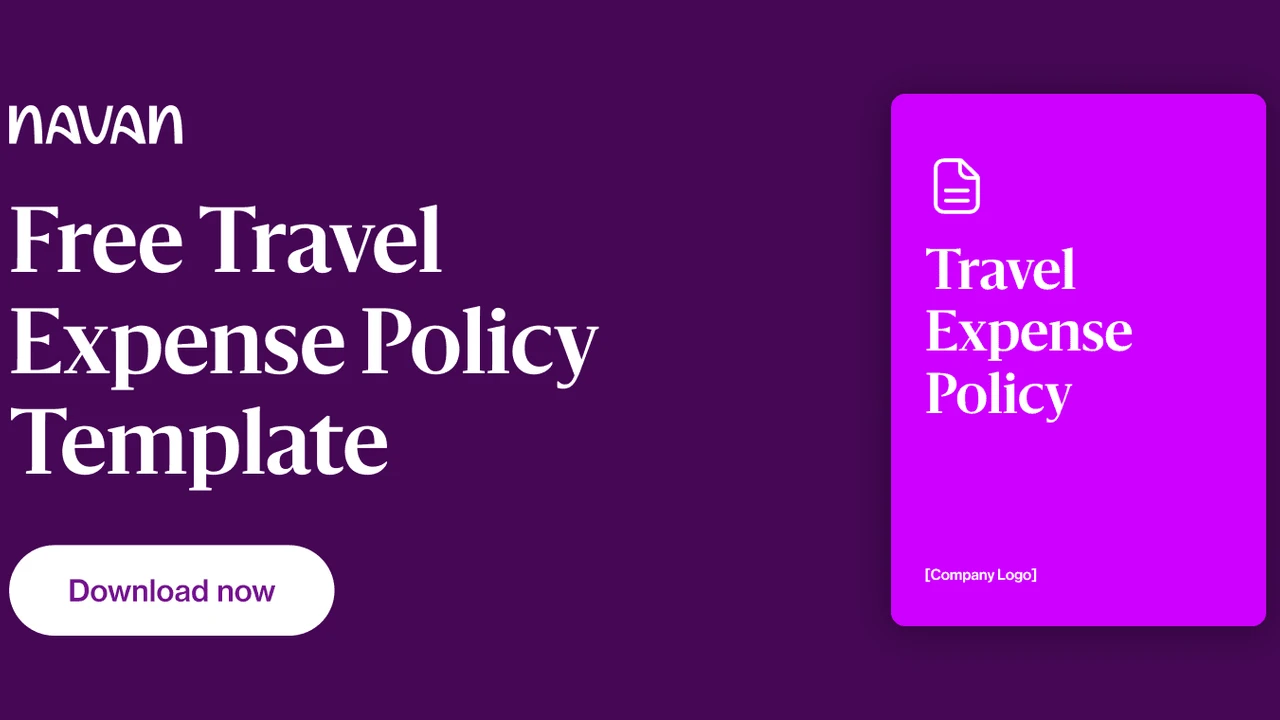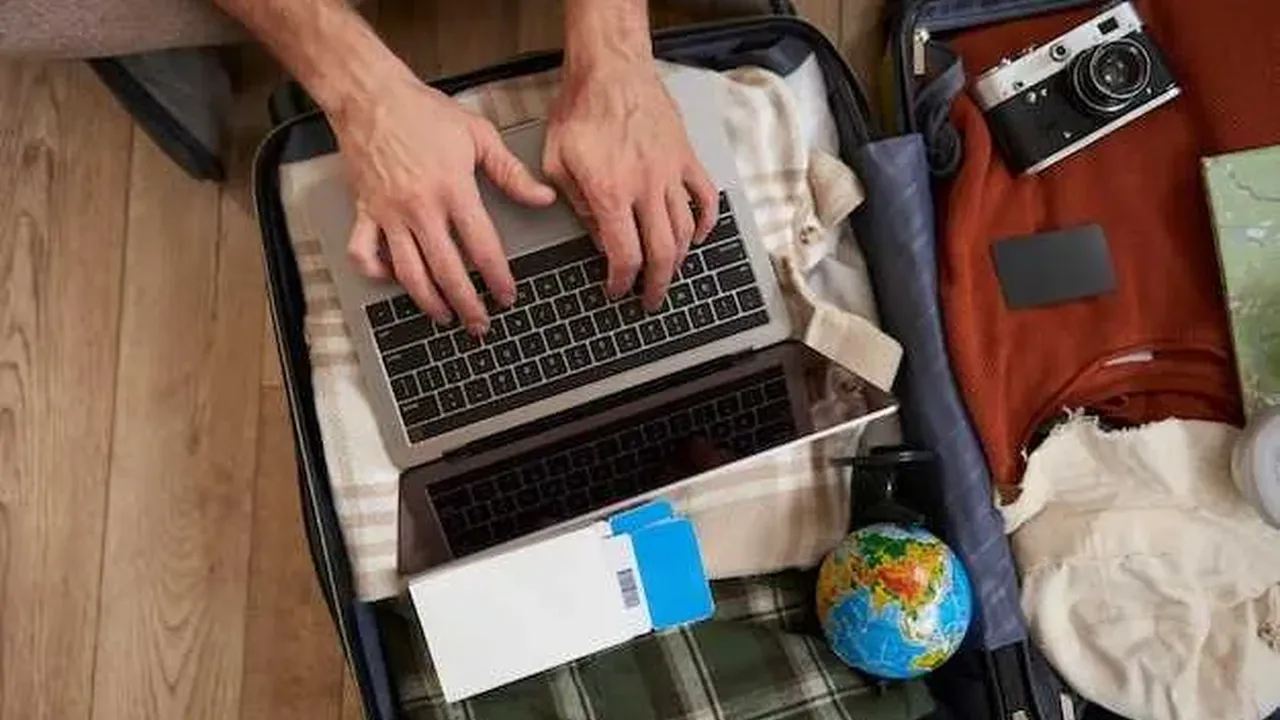Hotel Booking Strategies for Travel Policy Savings
Practical tips and policy guidelines to help employees find and book the most cost-effective air travel options.

Travel Policy for Airfare Savings Tips
Let's face it, airfare can be a huge chunk of your business travel budget. It's not just about finding the cheapest ticket; it's about smart planning, understanding the market, and having a travel policy that guides your team to make the best decisions. This isn't about cutting corners so much that your employees are miserable, but about being strategic to save money without sacrificing productivity or comfort. We're going to dive deep into how your travel policy can be a powerful tool for airfare savings, offering practical tips, looking at some cool tech, and comparing different approaches.
Understanding Airfare Dynamics The Basics of Saving
Before we even talk about policies, it's crucial to understand how airfare works. It's a complex beast, influenced by demand, seasonality, fuel prices, competition, and even the time of day you search. Airlines use sophisticated algorithms to price tickets, often changing them multiple times a day. Your policy needs to acknowledge this dynamic nature and provide flexibility while still setting boundaries.
The Early Bird Gets the Worm Why Advance Booking Matters
One of the most consistent ways to save on airfare is to book in advance. Airlines typically release their cheapest fares months out, and prices tend to climb as the departure date approaches. Your travel policy should strongly encourage, if not mandate, advance booking. For example, a policy could state: 'All domestic flights must be booked at least 14 days in advance, and international flights at least 30 days in advance, unless otherwise approved by a department head.' This simple rule can lead to significant savings over time.
Flexibility is Key Consider Alternative Airports and Dates
Sometimes, flying out of a slightly less convenient airport or on a different day of the week can save hundreds of dollars. Your policy can encourage this flexibility. For instance: 'Employees are encouraged to explore alternative airports within a 50-mile radius of their primary departure/arrival city if it results in a cost saving of 15% or more.' Similarly, flying on Tuesdays, Wednesdays, or Saturdays often yields lower fares than peak travel days like Mondays or Fridays. Your policy could suggest: 'When possible, consider mid-week travel to optimize airfare costs.'
The Power of Layovers When Direct Isn't Always Best
Direct flights are convenient, but they often come with a premium price tag. For longer journeys, a layover can significantly reduce the cost. Your policy might state: 'For flights exceeding 4 hours, a single layover is permissible if it results in a cost saving of 20% or more, provided the total travel time does not exceed X hours.' This balances cost savings with employee well-being.
Leveraging Technology for Airfare Savings Tools and Platforms
In today's world, technology is your best friend for finding the best airfare deals. There are numerous tools and platforms designed to help you compare prices, track fares, and even predict price changes. Integrating these into your travel policy and workflow is a game-changer.
Online Travel Agencies OTAs and Metasearch Engines
Your policy should guide employees on which platforms to use. While booking directly with airlines can sometimes offer more flexibility for changes, OTAs and metasearch engines often provide a broader view of available fares across multiple airlines. Examples include:
- Google Flights: This is a fantastic tool for exploring flight options. It has a calendar view that shows price fluctuations by date, allows you to track specific routes, and even suggests alternative airports. It's great for initial research. Your policy could recommend: 'Before booking, employees should utilize Google Flights to compare prices across various dates and airlines.'
- Skyscanner: Similar to Google Flights, Skyscanner is excellent for finding the cheapest dates to fly to a destination. It also includes budget airlines that might not appear on larger GDS systems.
- Kayak: Kayak aggregates results from hundreds of travel sites at once, including OTAs and airline websites. It also offers price alerts and prediction tools.
- Expedia / Booking.com / Priceline: These OTAs often offer package deals (flight + hotel) that can sometimes be cheaper than booking flights alone, though your policy might need to address hotel booking separately.
Corporate Travel Management Platforms CTMPs
For larger organizations, a dedicated Corporate Travel Management Platform is invaluable. These platforms integrate your travel policy directly into the booking process, ensuring compliance and often providing access to corporate rates. They also offer robust reporting and analytics.
- SAP Concur: Concur is a widely used integrated travel and expense management solution. It allows you to set up detailed travel policies, automate approvals, and provides a booking engine that guides employees to policy-compliant options. It can integrate with various travel providers and offers strong reporting capabilities. Pricing: Varies significantly based on company size and modules used, typically subscription-based per user or per transaction. It's a premium solution for mid-to-large enterprises.
- TripActions (now Navan): Navan is known for its user-friendly interface and AI-powered recommendations. It focuses on providing a consumer-like booking experience while enforcing corporate policies. It offers real-time policy guidance and incentives for employees to choose cost-effective options. Pricing: Subscription-based, often with a per-employee or per-trip fee. Geared towards modern businesses looking for a seamless experience.
- TravelPerk: TravelPerk offers a comprehensive platform for business travel, including booking, expense management, and 24/7 support. It's known for its flexibility and ability to handle complex itineraries. It also has a carbon offsetting program. Pricing: Tiered subscription plans, with a free basic plan and paid plans offering more features and support. Good for small to medium-sized businesses and growing startups.
- Egencia (an Expedia Group company): Egencia provides a global travel management platform with a focus on personalized service and data insights. It offers a wide range of travel content and tools for policy enforcement and cost control. Pricing: Custom quotes based on volume and services. Suitable for larger enterprises with global travel needs.
Price Tracking and Alert Tools
Your policy can encourage the use of price tracking tools. These tools monitor flight prices for specific routes and notify you when they drop.
- Hopper: Hopper predicts future flight and hotel prices with 95% accuracy up to a year in advance. It tells you whether to buy now or wait, and sends notifications when prices are expected to rise or fall. It's a mobile-first app. Usage: Employees can set up alerts for their planned business trips.
- FareCompare: FareCompare offers deal alerts and helps users find the best time to buy flights. It also has a 'When to Buy' calendar. Usage: Useful for general price trend analysis before a trip is even planned.
Policy Guidelines for Smart Airfare Booking
Now, let's translate these tips and tools into actionable policy guidelines. Your policy should be clear, concise, and easy for employees to understand and follow.
Mandatory Advance Booking Periods
This is non-negotiable for significant savings. Your policy should clearly state the minimum advance booking required for different types of travel (domestic, international, short-haul, long-haul). For example:
- Domestic flights: Minimum 14 days in advance.
- International flights: Minimum 30 days in advance.
- Exceptions require manager approval and a documented business reason.
Preferred Airline Programs and Corporate Discounts
If your company has negotiated rates with specific airlines, your policy must direct employees to use them. 'Employees must prioritize booking with [Preferred Airline 1] and [Preferred Airline 2] when available and cost-effective. Utilize the corporate discount code [CODE] or book through the designated corporate travel platform.' This ensures you leverage your buying power.
Class of Service Guidelines Economy is Standard
Unless there's a very specific reason, economy class should be the default. Your policy should clearly define when an upgrade is permissible.
- 'All flights under 6 hours must be booked in Economy class.'
- 'For flights exceeding 6 hours, Premium Economy or Economy Plus may be considered if the cost difference is less than X% of the standard Economy fare, or if approved by a department head for specific business reasons (e.g., direct flight to a critical meeting).'
- 'Business or First Class travel is only permitted for flights exceeding 8 hours and requires executive-level approval, or for specific roles as outlined in Appendix A.'
Non-Refundable vs. Flexible Fares Balancing Risk and Cost
Non-refundable tickets are almost always cheaper, but they come with a risk if plans change. Your policy needs to address this balance.
- 'Employees are encouraged to book non-refundable fares for confirmed travel plans where the likelihood of cancellation or change is low.'
- 'For trips with a higher probability of change, or for critical client meetings, flexible or refundable fares may be booked with manager approval, provided the cost difference is justified.'
- 'Cancellation or change fees for non-refundable tickets will be covered by the company if the change is due to business reasons and approved by management.'
Baggage Fees and Ancillary Costs
These hidden costs can add up. Your policy should provide guidance.
- 'The company will cover one checked bag per employee for flights where a checked bag is necessary for business purposes (e.g., carrying samples, equipment). Personal luggage fees are the employee's responsibility.'
- 'Seat selection fees are generally not reimbursable unless required for specific medical reasons or pre-approved by a manager for critical business needs (e.g., emergency exit row for tall individuals).'
Personal Travel Integration Bleisure Policies
Allowing employees to combine business and leisure travel (bleisure) can be a perk and sometimes even lead to savings if the employee extends their stay and covers the personal portion. Your policy should clearly define how this works.
- 'Employees may extend business trips for personal leisure, provided all additional costs (e.g., extra hotel nights, personal flight changes) are borne by the employee.'
- 'The company will only cover the portion of the flight that directly relates to the business travel dates and destination. Any additional flight costs incurred due to personal extensions are the employee's responsibility.'
Encouraging Employee Buy-in and Compliance
A policy is only as good as its adherence. Communication and incentives are key.
Clear Communication and Training
Don't just publish the policy; explain it. Hold training sessions, create FAQs, and make sure employees understand the 'why' behind the rules. 'Our goal is to save company resources so we can invest more in our people and products, not to make your travel harder.'
Incentives for Cost-Saving Behavior
Some companies offer incentives for employees who consistently choose the most cost-effective options. This could be a small bonus, a gift card, or even a portion of the savings returned to the employee. For example, 'Employees who consistently book flights below the average market rate for their route may be eligible for a quarterly travel savings bonus.'
Regular Review and Feedback
The airfare market changes constantly, and so should your policy. Review it annually, and solicit feedback from your frequent travelers. Are the rules practical? Are there new tools or strategies to consider? 'We encourage employees to provide feedback on the travel policy to ensure it remains fair and effective.'
By implementing these tips and leveraging the right technology, your travel policy can become a powerful tool for significant airfare savings, ensuring your business travel is both efficient and cost-effective.
:max_bytes(150000):strip_icc()/277019-baked-pork-chops-with-cream-of-mushroom-soup-DDMFS-beauty-4x3-BG-7505-5762b731cf30447d9cbbbbbf387beafa.jpg)






